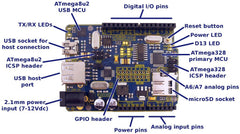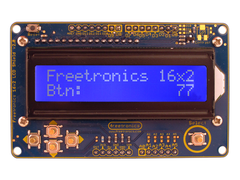Maker 'wesley03' has designed and published details on how to make your own wireless vital-signs monitor with an Arduino, XBee wireless units and various sensors. The system is designed to monitor a pulse and temperature, and display the data on an LCD and also analyse the data via Processing on a PC.

Although this system may be a work-in-progress, it is an interesting applicaition of wireless data transfer using the XBee system and also analysing incoming Arduino data using Processing. So for more information, the code and instructions visit the project page here. And we're on twitter, so follow us for news and product updates as well.
If this sort of project intrigues you and you're new to Arduino, the first step is a solid board for your projects - our Freetronics Eleven - the Arduino-Uno compatible with low-profile USB socket, onboard prototyping space and easy to view LEDs:























